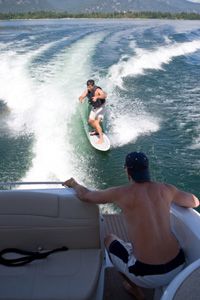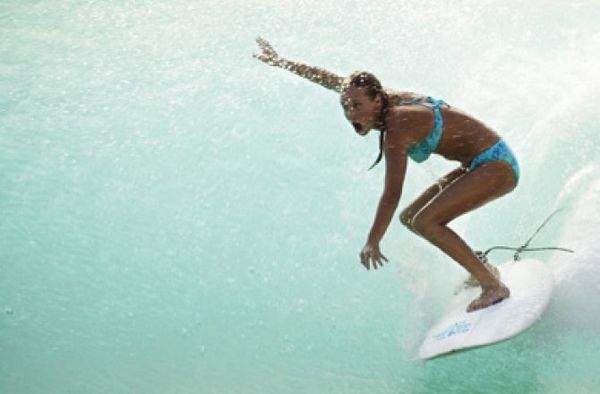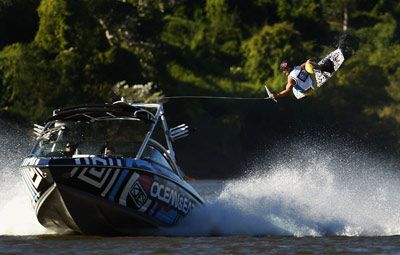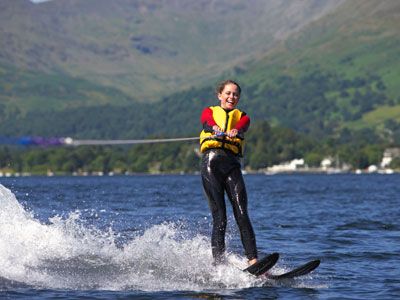Living far away from the ocean is no longer a barrier to finding some good waves to surf. You just need to create your own. Wakesurfing, a relatively new water sport and an offshoot of wakeboarding, is gaining popularity among novices and seasoned water-sport athletes alike. It's still a fairly young sport, but there's an annual World Wakesurfing Championship and many other professional-level competitions around the United States. Adherents of wakesurfing trumpet its relative safety compared with other water sports and the ease with which aspiring wakesurfers can take up the activity
Wakesurfing involves a surfer trailing behind a motorboat on a short surfboard that's about five feet (1.5 meters) long and literally surfing through the boat's wake without being attached to the boat. The boats are freighted with extra weight to increase the amount of wake and make the sport more challenging. At times, a wakesurfing boat may have so much extra ballast, it looks as if it may tip over, but these are actually ideal conditions for producing good wake. A boat captain may even ask his passengers to shift to the same side to add extra ballast to that area.
Advertisement
Wakesurfing starts with a surfer lying in the water with his or her feet on the board, ready to quickly stand up. The surfer holds onto a towrope as the boat picks up speed, eventually topping out anywhere from 9 to 11 miles per hour. The surfer then jumps into a standing surfing position, drops the rope and surfs through the wake the boat creates. A surfer may be able to ride the wave for as long as five minutes, and more advanced surfers can perform tricks, spins and other stunts [source: Regenold].
But how can a motorboat create waves that mimic that of the ocean? And is it really possible to pull off spins and aerial tricks on a relatively calm lake? Keep reading to learn all about this growing sport, beginning with the physics of wakesurfing.
Advertisement



